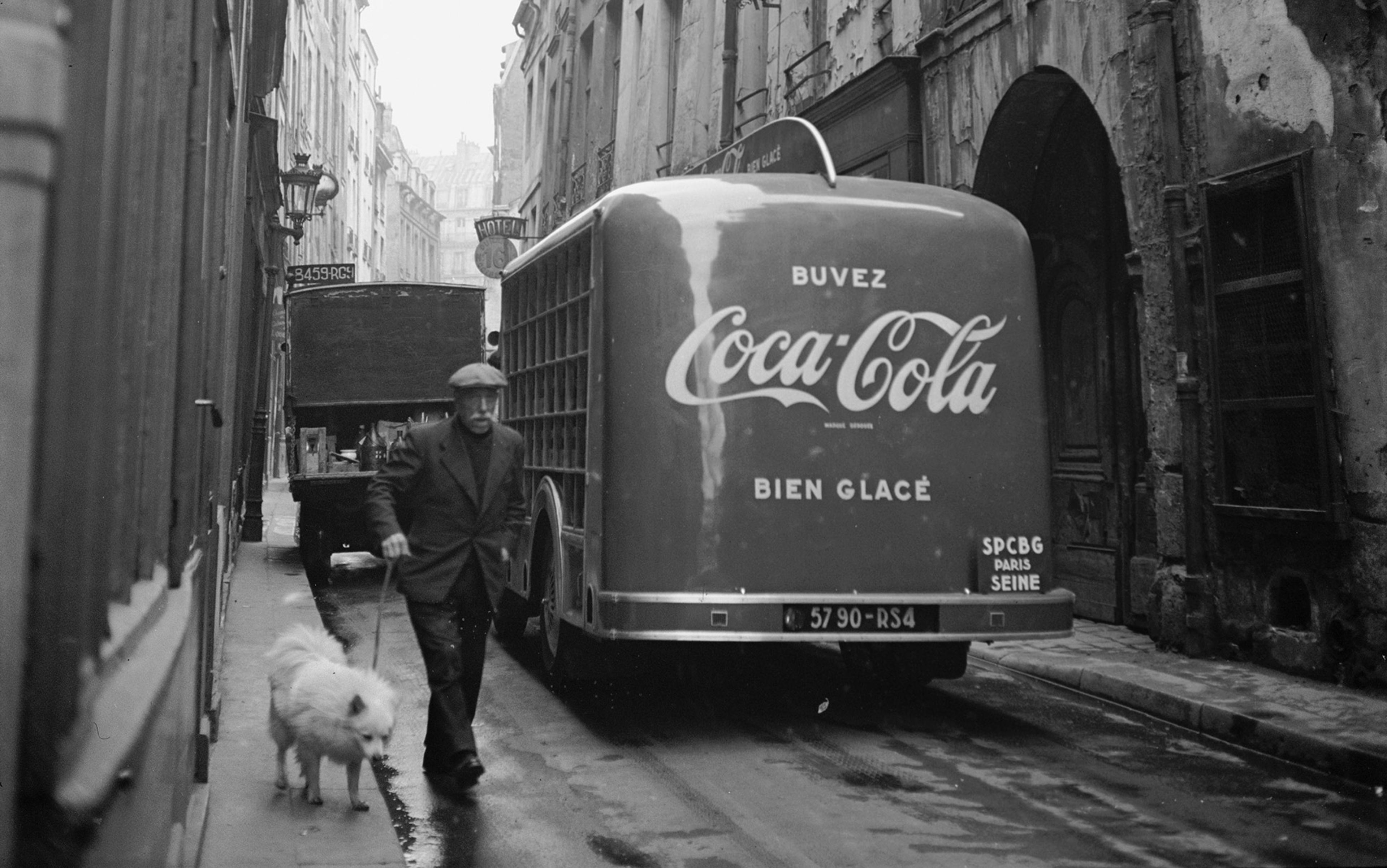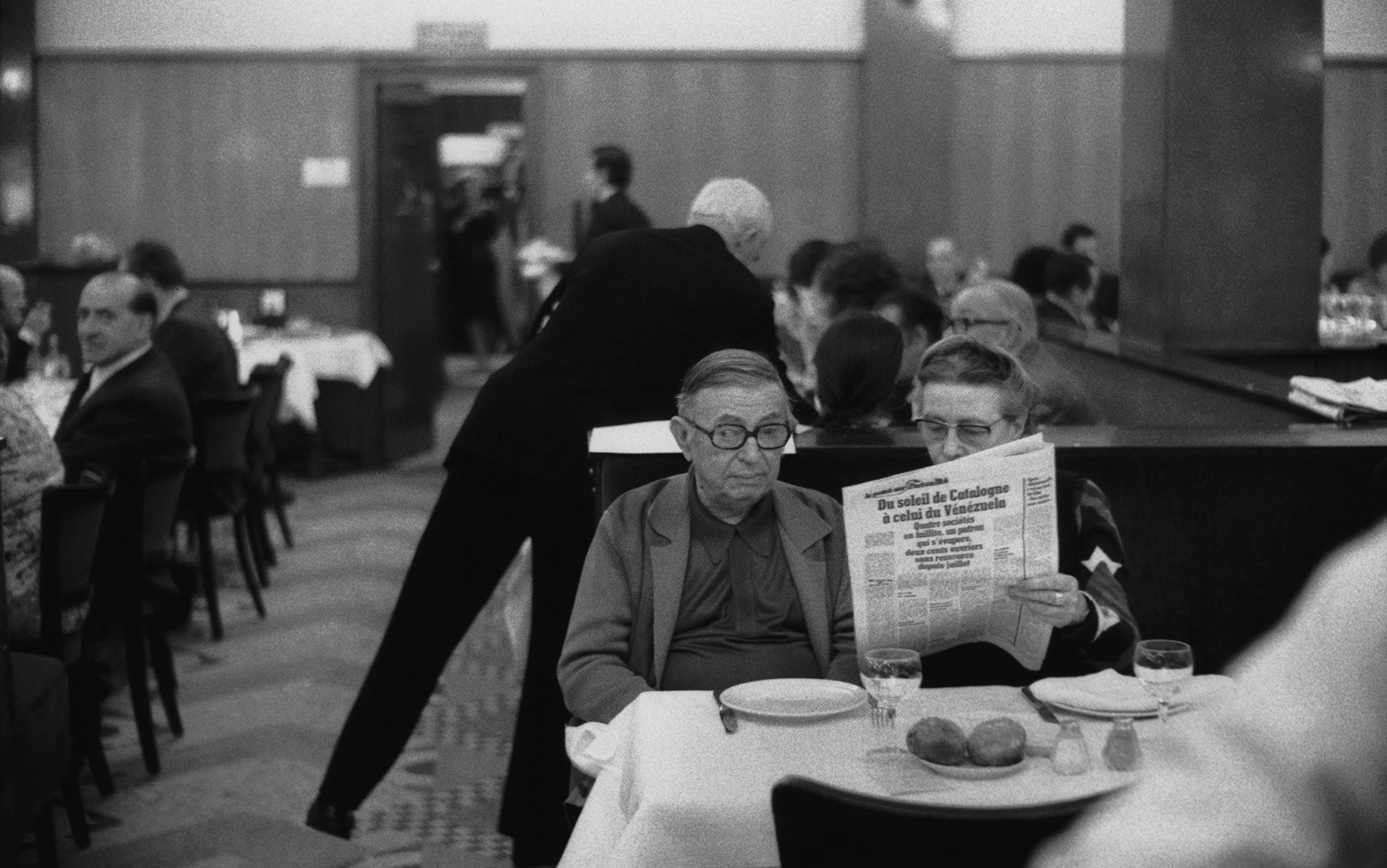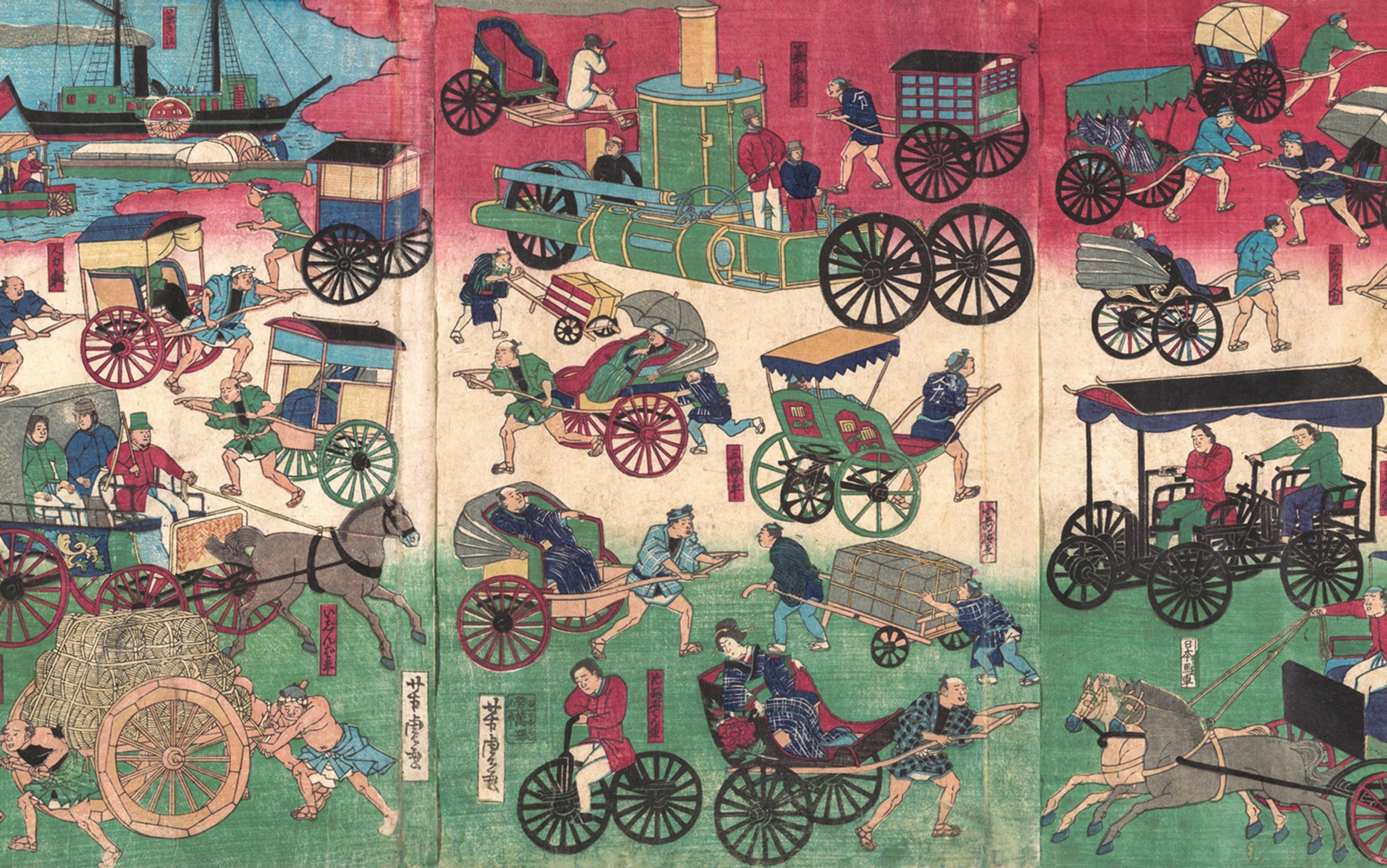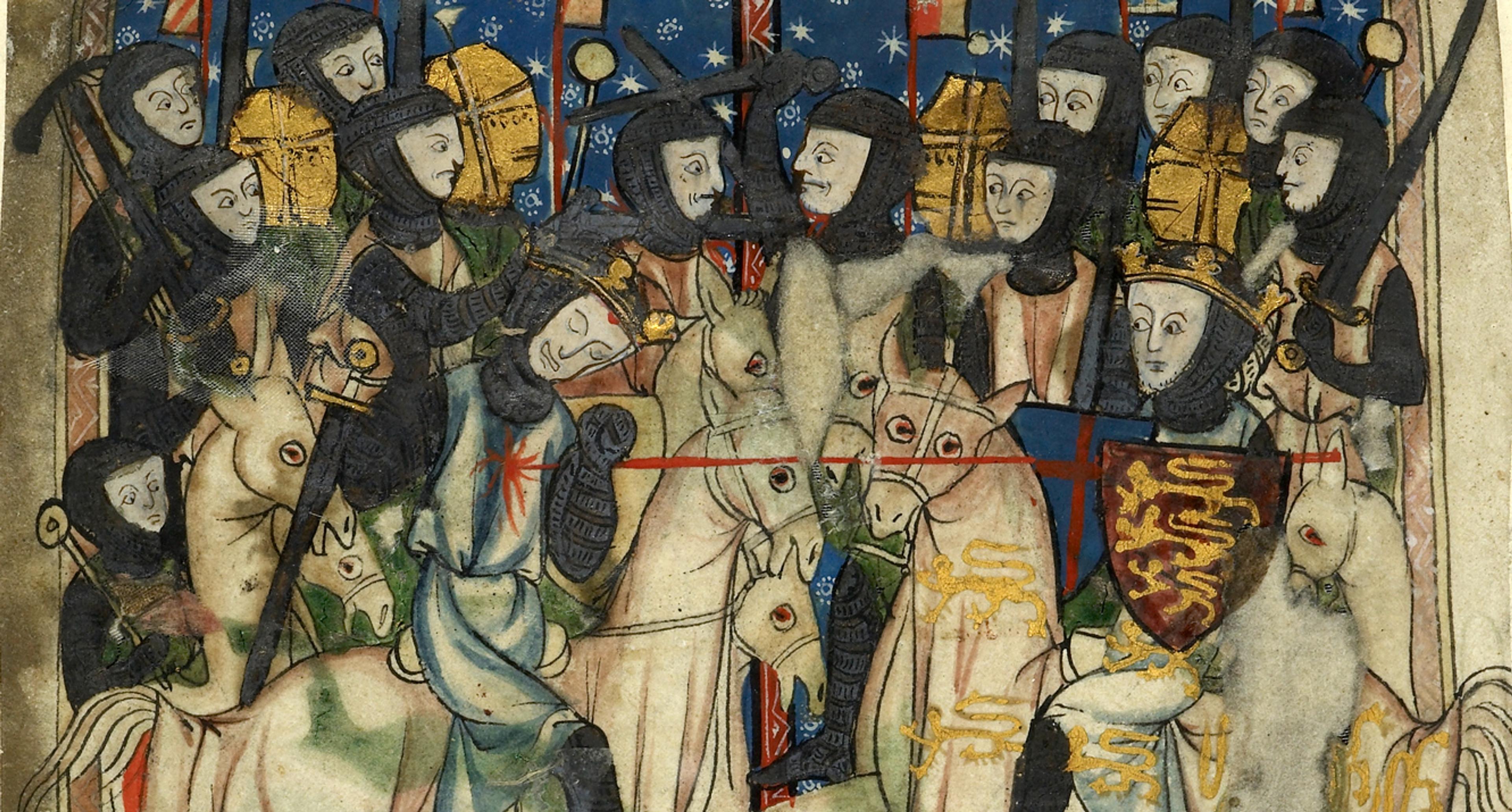In the English-speaking world, the term ‘Anglo-Saxon’ usually refers to a specific period in medieval history. Occasionally, a residual contemporary usage creeps back into general parlance – such as the common expression ‘White Anglo-Saxon Protestant’, used to describe a certain type of American East Coast elite – but this is unusual. Few English speakers today would describe themselves as Anglo-Saxons. It sounds too archaic and too awkward for the modern multi-cultural societies we live in.
It is quite the opposite in France, however. The very same term, usually deployed as an adjective, has passed into everyday language at all levels of society. The French breezily refer to les Anglo-Saxons when talking about the British, the Americans, the Canadians, the Australians or some mix of all four; they are more than happy to engage in vigorous arguments about the so-called modèle anglo-saxon, which has become a catch-all term to describe a variety of cultural, social and economic policies developed in the English-speaking world; and they are quite comfortable drawing stark contrasts between une culture anglo-saxonne and a wide range of countercultures. Even politicians and media pundits do not hesitate to describe a ‘model’, an ‘approach’ or an ‘idea’ as Anglo-Saxon – and they can be confident that the vast majority of French people will know what they mean.
All of this can sound mildly unsettling to the untrained ear. For a start, there are the troubling racial and ethnic overtones of the term Anglo-Saxon – which, as we will see, are a vital part of the word’s history through the 19th and 20th century. Then there is the simple fact that the starkly different cultures included under the umbrella French term of Anglo-Saxon do not consider themselves as mutually compatible. The British and Americans have not seen themselves within the same broad cultural sphere for several centuries, and the unravelling of the Commonwealth in the 1960s and ’70s has severed the privileged connection that Canadians and Australians had with the British ‘motherland’. More than ever in the 21st century, the French term Anglo-Saxon seems ill-suited to describe the peoples and places it purports to describe.
Yet the use of the term in France has increased exponentially in the past few decades. Never has the term Anglo-Saxon, either as a noun or as an adjective, been so widespread. This is visible in a variety of metrics and big data available to the contemporary historian. At the broadest level, we can use Google’s N-Gram Viewer to track the usage of the term from 1800 to 2008. The results show a consistent increase in the instances of the term over the past two centuries. This is corroborated by a wide variety of other sources, including the Frantext database of literary texts in French, and the text-searchable databases of some of France’s leading publications (such as Le Monde, L’Obs and Esprit).
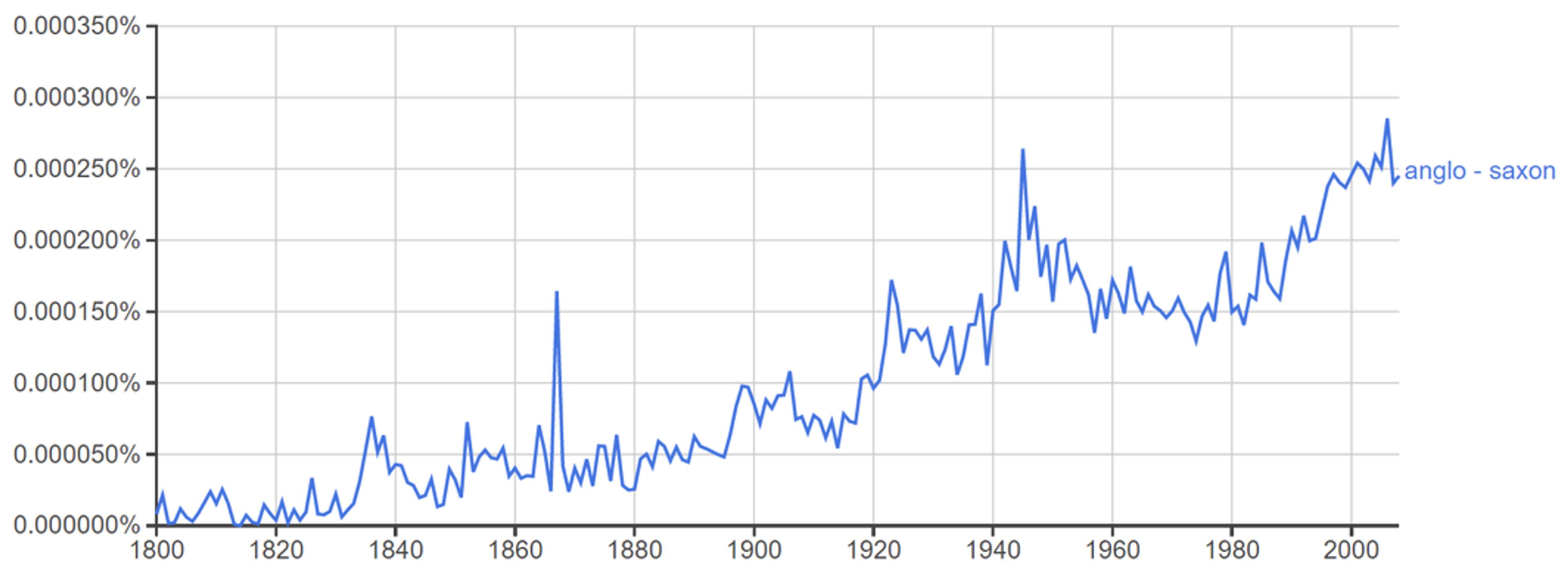
Google N-Gram of the search term ‘Anglo-Saxon’ within the French text database of Google Books for the period 1800-2008. Smoothing of 0.
Of course, these databases do not include non-written sources. The most frequent use of the term Anglo-Saxon in France is on the radio or television. Whereas publications with stricter editorial policies will weed out sloppy uses of the term, talkshow hosts and commentators will readily pepper their interventions with references to le capitalisme anglo-saxon or le monde anglo-saxon. And it goes without saying that any English-speaking foreigner who works in France is bound to be told at some point that he or she is sounding distinctly Anglo-Saxon.
So what explains the tenacity of the term Anglo-Saxon in France? And why have the French continued to use it when few in the English-speaking world do? The answer to these questions lies in the complex history of the term, which has developed its own specifically French meanings as it has travelled through time from the mid-19th century to the present day. Crucially, Anglo-Saxon has become closely tied to ideas of French national identity. To put it simply: when the French refer to ‘the Anglo-Saxon’ or use the term as an adjective, they are usually talking about themselves. The Anglo-Saxon is a mirror on Frenchness; it is France’s alter-ego and often its most feared enemy.
Even a cursory glance at the Google N-Gram graph above demonstrates how closely the fortunes of the term have been related to key moments of national questioning in France. The four peaks on the graph – in the late 1860s and early 1870s, around 1900, in the mid-1920s, and at the end of the Second World War – coincided with moments of profound rupture and transformation. The fact that the term has continued to be used into the 2000s suggests that we are perhaps in another one of those moments now, as the French try to work out how much Anglo-Saxon culture they should adopt and how much they should resist.
Still, it is worth going back to the origins of the term in the mid-19th century to see when and how it took on the meanings that it did. Until around 1850, there is little evidence that the term Anglo-Saxon was used in France to refer to anything other than the early medieval period. It was only in the 1860s that a new meaning began to appear in the wake of Napoleon III’s abortive attempts to extend the French empire into Latin America. In learned publications such as the Revue des races latines, founded in 1857, ‘Anglo-Saxonism’ was juxtaposed with ‘Latinity’ in an attempt to place France at the heart of a global Latin world that stretched from South America and the Caribbean to Madrid and Paris. This global context laid the foundations for the elision between Britain and the United States that would become so central to the notion of the Anglo-Saxon in later years.
Over time, the term started to be used beyond the limited confines of French imperialist elite. A key indicator of its ubiquity was its inclusion in the revised edition of Émile Littré’s Dictionnaire de la langue française (1877). In addition to its historical definitions as they related to medieval Anglo-Saxon history and language, Littré’s Dictionnaire indicated that ‘When we speak of the race to which the Americans of the United States and the British belong, we often say that they are “Anglo-Saxons”.’ By the late 1870s, the Anglo-Saxon had developed into a well-articulated transnational and ethno-racial stereotype.
That the term should have emerged in France in the 1870s is hardly a coincidence. This was a period of intense soul-searching for the French in the wake of their defeat in the Franco-Prussian War and the violence of the Paris Commune. One of the most common strategies among the reformist and liberal elites of this period was to search beyond France for ideas about how the country could regenerate itself. For this, Britain was an obvious place to look. Whereas France was struggling with civil war and defeat, Britain seemed to be a triumphant imperial power, whose influence stretched across the globe and whose economy dominated Europe.
This vision of Britain – and, by extension, the Anglo-Saxon – was crystallised in one of the most vibrant public debates in France at the very end of the 19th century. The short book À quoi tient la superiorité des Anglo-Saxons? (1897) by the intellectual Edmond Demolins used a mix of rather alarming statistics, perfunctory observation, and racial typologies to argue that the Anglo-Saxon race was particularly well-suited to the modern world. Not only was it on the way to imperial dominance – a point made abundantly clear by the fact that many editions carried a map on the first page designed to show the Anglo-Saxons’ global sphere of influence – but it was also highly effective at promoting economic growth.
This conflation of the UK and the US created a powerful myth of expansion, driven by colonialism and capitalism
For Demolins, this innate predilection for capitalism was the result of the Anglo-Saxons’ ‘particularist’ social structure. This had its roots in the historical dominance of the Anglo-Saxons over the Celts and was expressed in a close-knit family unit. The result was an ethnic group unusually well-adapted to economic and social modernity. It was not a political system that made the Anglo-Saxon distinctive; it was innate psychological and racial characteristics. In many ways, this argument was a polemical reworking of a long-standing view of Britain as a land of individualism using the language of historical essentialism. But Demolins’s extended eulogy of the Anglo-Saxon school system – based on visits to the rather unconventional and recently founded Bedales and Abbotsholme private schools – demonstrated that educational institutions and pedagogical philosophies had also played an essential role. Anglo-Saxon education, it seemed, embodied all the finest traits of the Anglo-Saxon race.
Demolins’s pamphlet was enormously successful. It went through many printings and was translated into English, German, Spanish, Russian, Romanian, Polish and Arabic. It provoked vigorous responses in France and was widely read among the elite. Even for those who disagreed with its conclusions, it provided a compelling explanation for Anglo-Saxon dominance, particularly given that it was published in the year of the Fashoda Incident, which saw Britain and France engaged in a very public colonial confrontation in Africa that ended with Britain comfortably imposing itself.
Quite apart from its spectacular success, Demolins’s essay made clear that a new idea of the Anglo-Saxon had taken shape in France. For a start, the UK and the US were becoming more closely associated, while Germany was becoming increasingly detached from the Anglo-Saxon axis. Where a great deal of mid-19th-century history links the German ‘Saxon’ peoples and the British Isles, by the time Demolins wrote his pamphlet, the Germans were receiving their own, distinct analysis. Indeed, significant portions of his text were devoted to outlining the differences between the educational system and public life of the Anglo-Saxon and the German.
This conflation of the UK and the US reinforced not just a sense of Anglo-Saxon difference, but a pronounced sense of Anglo-Saxon ascendancy. It created a powerful myth of expansion, driven by colonialism and capitalism. In this respect, it is notable that what was perceived as the US’ first ‘real’ colonial intervention – in the Spanish-American War of 1898 – coincided with the publication of Demolins’s book. As has been the case ever since, the French both feared and admired the Anglo-Saxon at the turn of the 19th-century – and they used it as a vehicle for discussing their own national anxieties.
The two most significant peaks in the Google N-Gram graph in the 20th century are in the 1920s and at the end of the Second World War. This makes good sense since, at these two moments, the Anglo-American world became the focus of intense popular interest in France. In this period, Demolins’s ethno-racial typology fused with the literary imagination of French authors to elevate the figure of the Anglo-Saxon in French culture: whether in the form of an individual with specific characteristics or a master race intent on global domination, the Anglo-Saxon seemed omnipresent. And, as the world collapsed into conflict through the 1930s and ’40s, the realities of imperial competition and geopolitical strategy served only to reinforce the sense that the age of the Anglo-Saxon had well and truly taken hold.
One of the key vehicles for notions of the Anglo-Saxon was literature. From the 1870s onwards, there were innumerable references to the Anglo-Saxon in canonical and widely read texts. Jules Verne, the author of Twenty Thousand Leagues Under the Sea (1870), frequently wrote that hardy ruggedness was a unique characteristic of the Anglo-Saxon man. Similarly, the novelists Paul Bourget and Georges Bernanos painted the picture of the Anglo-Saxon as distinctively disciplined, honest and straight-talking. Such an image conformed perfectly to the stereotype of the imperial man: implacable in the face of exotic illnesses and readily able to adapt to difficult climates and unexpected challenges. The first decades of the 20th century were the height of imperial expansion, and the French elites were trying to figure out what made the British so successful at the empire game. It helped to imagine that a combination of upbringing and education – neither of which were available to the French – were the key ingredients.
The symbolism of the D-Day landings only confirmed the Anglo-Saxon world intended to divide up the globe by itself
This desire to emulate was tempered by the realisation that the Anglo-Saxon was inherently dangerous. In the years following the end of the First World War, the Right-wing political thinker Charles Maurras worried that the Anglo-Saxon was one of the races that was coming to dominate the globe and would leave the Latins far behind. This fear of civilisational ‘decadence’ and ‘decline’ was heavily influenced by important developments in French Catholicism. As well as being an open imperialist threat, there was a growing sense in these circles that the American in particular, and the Anglo-Saxon in general, was the avatar of an increasingly individualistic and hyper-competitive capitalism. Catholic thinkers in France feared that the fabric of society was unravelling in the interwar years, particularly in the light of the Great Depression. Inevitably, the idea of the Anglo-Saxon proved a useful expression for this critique. To emphasise the autonomy, individualism and work ethic of the Anglo-Saxons was simultaneously to warn the French of the dangers of inviting the Anglo-Saxon spirit into France.
The plethora of references to the Anglo-Saxon at the end of the Second World War have an altogether more straightforward explanation. With the US’ entry into the war in 1941, the British Empire in all its forms was now united in its struggle against fascism. And, with France defeated and humiliated in 1940, it seemed that yet again the Anglo-Saxons were forging ahead. The symbolism of the D-Day landings – when Allied troops made northern France the catalyst for the reconquest of western Europe – and the fact that Charles de Gaulle was left out of the Yalta conference in February 1945 only confirmed what the French had long believed: that the Anglo-Saxon world, in collaboration with the Soviet Union, was intending to divide up the globe by itself. Not surprisingly, this resulted in a deluge of articles and essays about a renewed Anglo-Saxon threat in the mid- to late-1940s – a spike that is clearly represented in Google’s database. Just as in the 1860s and in the late 1890s, the use of the term Anglo-Saxon was intertwined with global conflict.
How, then, to explain the more recent rise in usage? Since the violent unravelling of the French Empire in the 1950s and ’60s, France has not been engaged in a major armed conflict, nor has it fought against UK or US armies. Moreover, the racialised model that underpinned the origins of the idea of the Anglo-Saxon in France has fallen into disrepute. Where before the most common adjectival use of Anglo-Saxon in French was in the phrase la race anglo-saxonne, such usages have become taboo since the 1970s. Today, we readily talk about national groups (‘British’, ‘French’) or regional entities (‘Europeans’, ‘South Asians’), but we would hesitate to contrast, as Maurras did in the 1910s, the ‘Anglo-Saxons’, the ‘Slavs’ and the ‘yellow races’.
So why do the French continue to use such a loaded term? The answer lies in its transformed meaning. Since the 1970s, its racial connotations have been buried, to be replaced by broader social, cultural and economic meanings. Two of these stand out: its use to describe the economic system of late capitalism and its importance in debates surrounding multiculturalism. There is still, obviously, a competitive element to the term. It still conjures up older, quasi-military connotations of the Anglo-Saxon, for example when de Gaulle used it in the 1960s to describe Anglo-American nuclear cooperation, and when contemporary European negotiators use it to describe British intransigence in the face of the European Union. But the term is now much more commonly applied to an amorphous sense of difference between France and the English-speaking world.
The resurgence of the term Anglo-Saxon in relation to late capitalism can be easily tracked in a variety of French publications. From the early 1990s onwards, journalists and editors begin to attach the adjective Anglo-Saxon to the words capitalisme (capitalism) and marché (market). A search in the archives of the staunchly Left-wing Le Monde diplomatique since 1978 turns up references to the ‘monetarist myopia that dominates the Anglo-Saxon world’ (in 1981); the ‘attempts on the part of Anglo-Saxon capitalism to achieve global hegemony’ (in 1982); and the ‘Anglo-Saxon capitalist model that is the privileged choice of multinationals’ (in 1992). These are complemented by frequent references to ‘Anglo-Saxon liberalism’, which was usually seen to be a dangerous affront to a French ‘social model’. As the 1990s wore on, this language became increasingly alarmist: commentators warned of the hegemony of an ‘Anglo-Saxon neo-liberalism’ or a predatory ‘Anglo-Saxon capitalism’, particularly in the wake of the public-sector strikes of 1995. Articles railed against the decision of the French government to fall in line with ‘the Anglo-Saxon “model”… the terrible consequences of which are now plain’ (in 1997).
France’s attitude towards its ethnic minorities was contrasted with a corrosive Anglo-Saxon multiculturalism
The association between the Anglo-Saxon and capitalism was cemented not only in the pages of Left-wing magazines. At the time of the 2005 referendum, which saw the French reject a new constitutional settlement for Europe, the Anglo-Saxon also featured prominently in public debate. Already before the referendum, the Gaullist president Jacques Chirac sought to reassure voters that ‘a laissez-faire solution, in other words, a solution leading to a Europe pushed forward by an ultraliberal, Anglo-Saxon and Atlanticist tendency… is not what we want’. And, shortly after the referendum, the first line of a front-page editorial in the daily newspaper Le Monde placed the fear of the Anglo-Saxon at the heart of the campaign. As the editors put it: ‘The depth of the No vote … can be explained largely by a refusal of the “Anglo-Saxon model”.’ By the first decade of the 21st century, the Anglo-Saxon had become more than a rhetorical device; it was a political battleground. To take a stand for or against the Anglo-Saxon ‘way’ was to take sides in a pressing debate about the ethics of economic development.
The other area in which the term Anglo-Saxon became widely used was in relation to multiculturalism. Over the course of the 1980s, the French political and intellectual elites began to advocate for a more robust model of integration and assimilation directed towards the country’s ethnic minorities. This meant reviving the history of French republicanism and pushing for a much stronger interpretation of French secularism (laïcité), especially in relation to France’s Muslim community. This was not without problems. France’s ethnic minorities mostly reacted with dismay at this new attempt to make them ‘integrate’ more effectively into society, and the French state’s heavy-handed approach to issues such as the Islamic headscarf drew criticisms from outside observers.
One of the consequences of this supposed ‘clash’ between a French model of integration and a ‘flexible’ Anglo-American multiculturalism was to revive the notion of the Anglo-Saxon and extend it into new debates. Just as the ‘French social model’ was pitted against ‘Anglo-Saxon capitalism’, so too France’s attitude towards its ethnic minorities was contrasted with a corrosive Anglo-Saxon ‘communitarianism’. The latter was said to encourage individualism, community conflict, and a withdrawal into specific ethnic or racial identities. Throughout the 1990s and 2000s, public intellectuals and politicians denounced the onward march of an Anglo-Saxon approach to the management of social and cultural difference, against which France’s model of integration was the only bulwark. In an eerie echo of the early 20th century, when French intellectuals imagined that their ‘civilisation’ was under threat from Anglo-Saxon imperialism and capitalism, a new generation of intellectuals worried that their society would be torn apart by the pernicious creep of Anglo-Saxon multiculturalism.
French use of the term Anglo-Saxon shows no sign of abating. The Google N-Gram graph ends in 2008 with a marked dip, but this was the year of the global financial crisis. Since then, Anglo-Saxon capitalism has come under scrutiny like never before. And, of course, the growth in Islamic terrorism in Europe has ensured that questions of integration, immigration and security remain at the top of the agenda. In the recent presidential election campaign, the leader of the far-Right Front National claimed that 2016 was the year in which the Anglo-Saxon world ‘woke up’ – a reference to Donald Trump and Brexit – while Emmanuel Macron was universally seen in the French media as an avatar of the ‘Anglo-Saxon model’ (for better or for worse, depending on the political opinion of the writer).
In these interminable debates, the realities on the ground are largely irrelevant. It does not matter that the US and the UK differ sharply in almost every way, not to mention the various other countries that sometimes come under the umbrella term of Anglo-Saxon. Nor does it matter that the clash between Anglo-Saxon and French ‘models’ rarely reflects complex sociological realities. Rather, the Anglo-Saxon in France is a placeholder, a mirror, an echo, a metaphor.
All of this will be familiar to students and scholars of nationalism. Cultural stereotypes are a powerful – and underestimated – tool in the way we construct the world around us. When the British nonchalantly refer to ‘the Continent’ or Americans talk about ‘Europe’, they are doing exactly what the French have done with the ‘Anglo-Saxon’. At times, English speakers can even fall into the same trap as their French counterparts when they lazily describe an idea or a way of thinking as ‘Anglo-American’ or ‘Atlantic’.
But, if the British and Americans continue to draw on a shared mythology of the Anglo-Saxon, they do not do so with as much zeal as the French. Today, French intellectuals, pundits, middle-managers, academics and workers happily use the term in much the same way as their late 19th-century cousins. Times have changed and few of these people would acknowledge its obviously racial origins, but this has not stopped the Anglo-Saxon from becoming a looming presence in French society. Perhaps we should just recognise that the concept of the Anglo-Saxon has been almost as resilient and adaptable as the Anglo-Saxons themselves?
